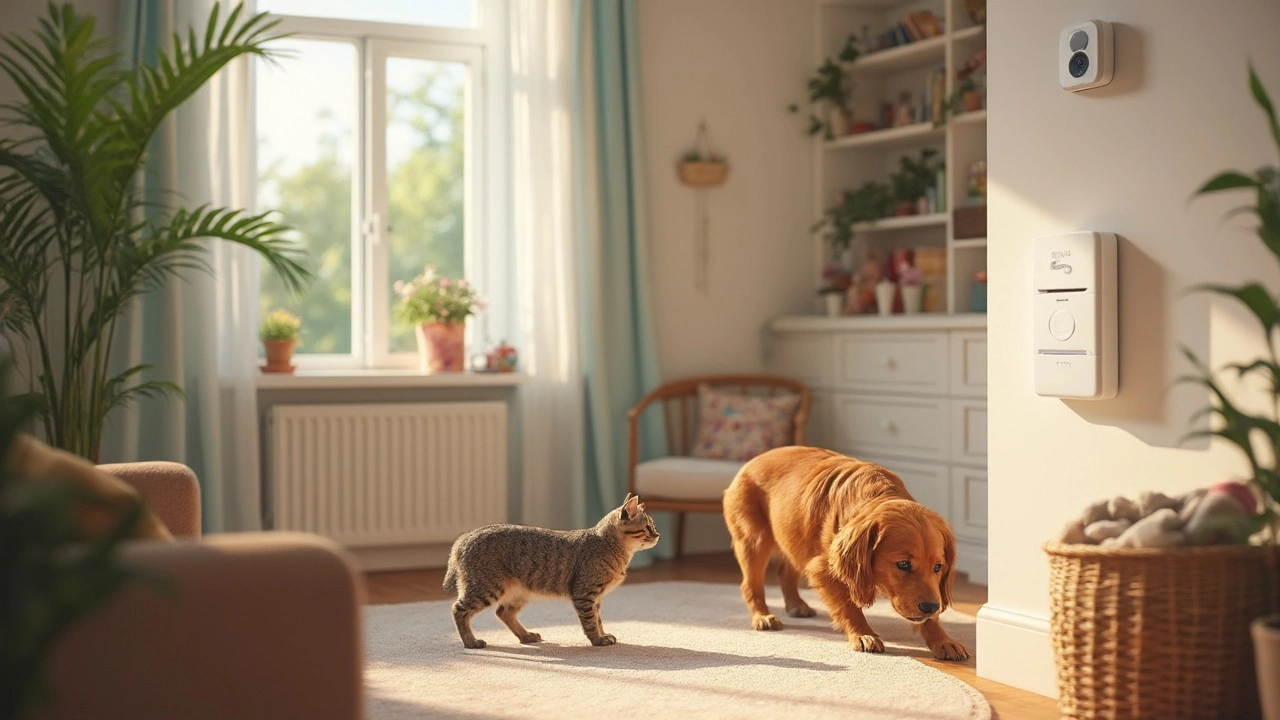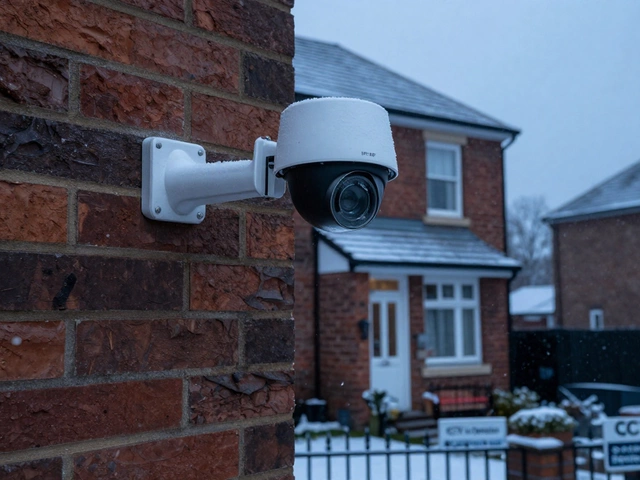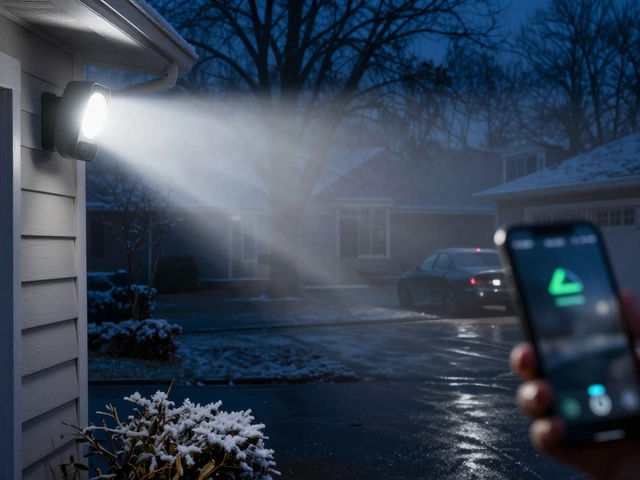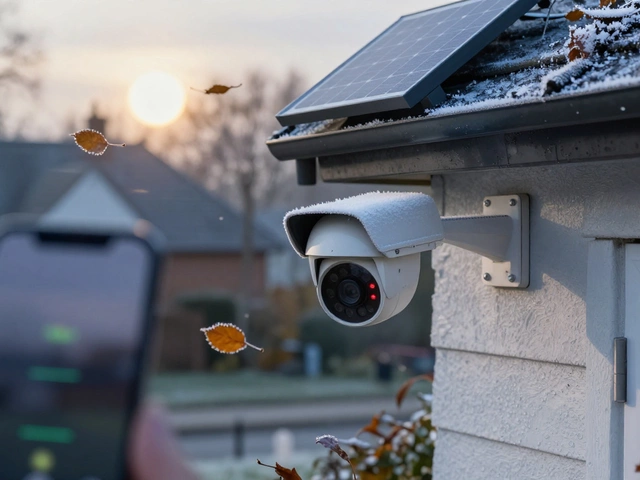Pets and home alarms aren't always the best mix. Dogs love to roam the house, cats leap onto every shelf, and if you’ve ever had a bird, you know they can get noisy. So, is Ring actually safe and reliable in a house with pets? Here’s what you really need to know.
Ring uses motion sensors to pick up movement, but not every sensor treats a wagging tail or a curious kitten the same as a human intruder. The good news—most Ring sensors are designed to ignore pets up to around 30-50 pounds when mounted correctly. But every pet is different, so you might have to tweak stuff to get it just right.
If you set up a Ring system the same way you would in a pet-free home, you’ll probably end up with false alarms—and those can get old fast. The trick is in how you place your sensors, how you set up your notifications, and which features you turn on or off. You want a house that’s secure, but you don’t want your phone blowing up every time your dog chases their own tail in the hallway.
Let’s break down how Ring works with pets, how to avoid the rookie mistakes, and some smart hacks to make your pets and your house both feel safe and chill.
- How Ring Detects Motion Around Pets
- Tips to Avoid False Alarms with Pets
- What to Watch Out For: Ring and Sensitive Animals
- Best Ring Setup for Pet Owners
- Alternatives and Extra Gear for Pet Safety
How Ring Detects Motion Around Pets
If you’ve got pets at home, you probably worry about your alarm going off every time your dog walks by the hallway or your cat jumps on the counter. The big thing to know about Ring alarm systems is they use Passive Infrared (PIR) sensors to detect motion. These sensors spot changes in heat, not just movement. That’s why they’re better than old-school sensors that only picked up on objects moving in front of them.
Ring claims their motion detectors are ‘pet-friendly’—to a point. According to the company, the standard Ring Motion Detector can ignore pets up to about 30-50 pounds if you install it at the recommended height (around 7-8 feet off the floor) and angle it down just right. This way, it looks over your pets but still catches the movement from a person walking by.
It’s not perfect science, though. If you have a particularly active or big dog (think labradors or bigger), or a very curious and athletic cat who loves high places, there’s still a chance they’ll trip the detector. Also, PIR sensors can pick up any sudden heat change. So pets that like to sleep near vents or windows on a sunny day could still be picked up if they move fast enough.
- Mount sensors higher on the wall to help avoid picking up small pets.
- Face sensors away from areas your pets love, like their favorite windows or the path to their food bowl.
- Don’t point detectors at anything that changes temperature quickly—this includes heating vents or direct sunlight spots.
Ring’s cameras work differently—they use a mix of PIR and software to check if what’s moving looks like a person. But for basic security, it’s the motion sensors that matter most for false alarms from pets. The good news: with a bit of trial and error, you can usually find a sweet spot where pets wander without constantly tripping the alarm while people still get flagged right away.
Tips to Avoid False Alarms with Pets
False alarms can drive anyone nuts, and nobody wants a siren blaring every time the dog walks past a window. Setting up your Ring alarm the right way goes a long way toward keeping things calm and secure.
The most common problem is with motion sensors. Regular ones pick up just about anything that moves. Ring’s sensors come with a “pet immunity” feature, which helps—if you use it properly. Here are some concrete tips:
- Mount sensors at the right height. Stick motion detectors at 7-8 feet up on the wall and tilt them down. This way, they’re less likely to catch cats on the floor or dogs walking by, but can still catch the big stuff (like a human intruder).
- Choose the best sensitivity setting. Open your Ring app and set motion sensors to “Low” or “Medium.” High sensitivity is almost guaranteed to get triggered by pets, especially if you’ve got an energetic breed.
- Avoid pointing sensors at pet hangouts. If your cat’s always leaping on the couch or your dog runs past the stairs 20 times a day, angle sensors away from those spots.
- Start small and test often. Set up just one sensor, arm the system, and watch what happens. Let pets do their normal thing while you monitor alerts. Adjust and repeat until those false alarms quit for good.
- Zone your house smartly. With Ring, you can set different rooms or areas to be “armed” or not. For example, keep sensors off in the room where your pets play during the day and only arm bedrooms or entry points.
Greg Mooney, a trusted security tech reviewer, lays it out like this:
“If you treat pet-proofing your alarm like checking all the windows before bed—actually doing it, not just saying you will—you’ll save yourself grief and keep your pets more relaxed.”
Still, no system is perfect, so do some test runs. According to a 2023 study by SafeWise, homes with dogs under 40 pounds saw a 72% drop in false alerts after switching to pet-friendly sensor setups.
| Pet Size | Recommended Motion Sensitivity | False Alarm Rate (before) | False Alarm Rate (after) |
|---|---|---|---|
| Under 20 lbs | Low | 45% | 15% |
| 20-40 lbs | Medium | 38% | 11% |
| Over 40 lbs | Low/avoid sensor path | 60% | 25% |
If your home still wakes up to unnecessary alarms, try skipping motion sensors in favorite pet spots, or use only door/window sensors in those zones. The setup takes a bit of trial and error, but your sanity (and your pets' nerves) will thank you.
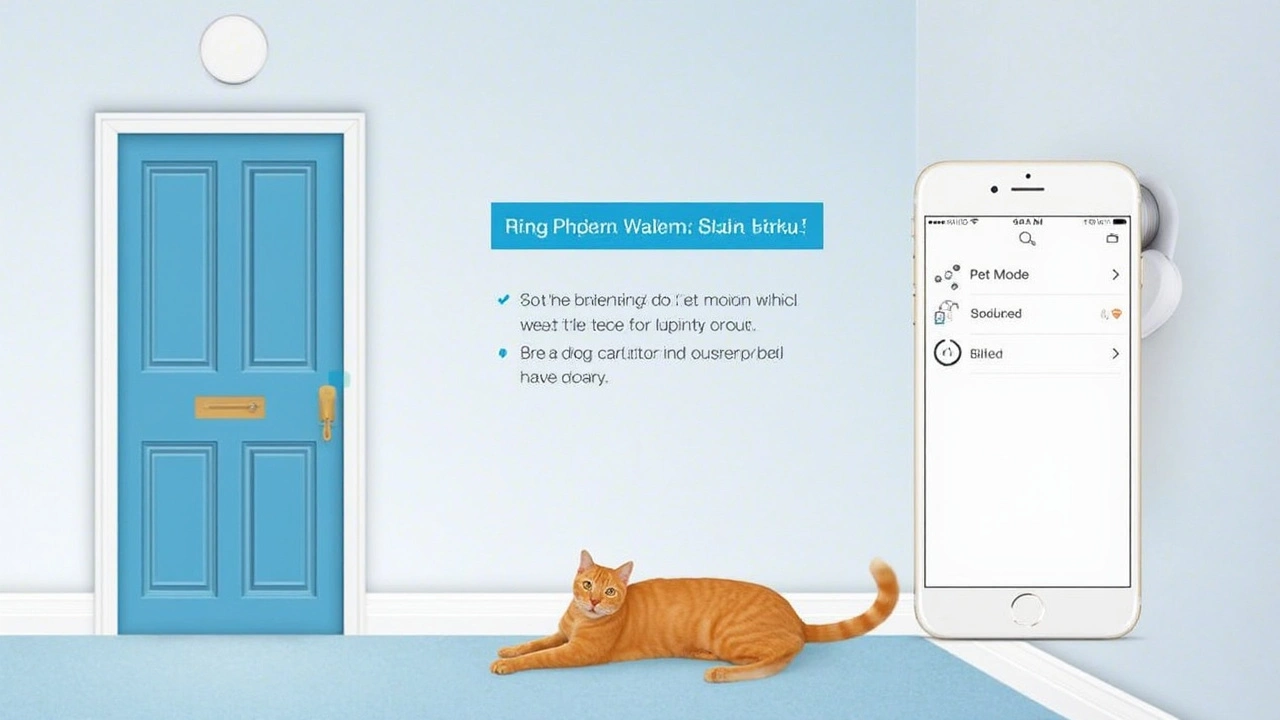
What to Watch Out For: Ring and Sensitive Animals
If you’ve got pets that get spooked easily, Ring could trigger some extra stress. Most cats and small dogs aren’t going to love sudden alerts, beeps, or lights, especially at night. According to pet behaviorists, loud or unexpected noises from tech gadgets are a top source of anxiety for about 15% of pets, especially new rescues and older animals.
People sometimes overlook how much a flashing LED or chirping motion sensor can mess with a jumpy animal. If your pet hides under the bed during thunderstorms or goes wild at the sound of a doorbell, you’ll want to think twice about where you place your sensors and keypads. The Ring alarm base station plays a chime for every entry and exit—imagine hearing that 10 times a day if you’re a nervous pup.
Some Ring models can also send out high-pitched beeps, which humans barely notice but can be uncomfortable for pets with sharp hearing. Birds, for example, can pick up higher-frequency sounds most people miss. This doesn’t mean you can’t use Ring in your house, but you’ll want to adapt. Here are a few real-world things to consider for sensitive animals:
- Position motion sensors higher up on the wall to keep cats and small dogs out of the detection zone.
- Use "Pet Mode" or sensitivity adjustment sliders in the Ring app if available. This lowers the chance of the alarm blaring when a pet walks by.
- Keep the base station away from pet beds, crates, or your animal’s favorite spot to lower stress.
- Turn down volume and alert tones for door sensors so they’re less startling for pets, especially during night hours.
- If you’re a bird owner, shields that dim or block LED lights can help birds stay calm at night.
Here’s a quick rundown of how common pets react to alarms and gadgets:
| Pet Type | Reaction to Alarms | Best Fix |
|---|---|---|
| Dog (Nervous) | Barking, pacing, hiding | Lower volume, sensor placement |
| Cat | Running, hiding, avoiding room | Reduce alerts, block LEDs |
| Bird | Flapping, loud calling | LED shields, distance from device |
| Rabbit/Small Animal | Thumping, freeze response | Quiet mode, out-of-sight placement |
A lot of pet owners say their animals get used to routines, so most pets will adjust as long as things aren’t startling all the time. Still, first-time setup is the most stressful part for sensitive pets, so it pays to plan ahead and keep the Ring experience as low-key as possible.
Best Ring Setup for Pet Owners
You can stop worrying about your dog or cat setting off your Ring alarm every time they move. The trick is to set up your system for the way your pets live, not just for break-ins. Here’s how to do it right.
Start with the motion sensors. Mount them about four feet off the ground or higher—this way, most dogs and cats won't set them off. Most Ring motion detectors are "pet immune" up to 30-50 pounds if you follow their install height. If you have larger pets, skip motion sensors in their favorite hangout spots or swap them for window or door sensors instead. These only trigger if someone actually opens a window or door, not when your husky leaps onto the couch.
Don’t forget about the cameras. Pick Ring cameras with customizable motion zones. This lets you draw a box just around the door or windows, ignoring pet traffic on the floor. If you use indoor cams, aim them at entry points and high-up—don’t point them at the floor, or you’ll just get endless clips of your cat’s tail.
- Use "Home" and "Away" modes smartly. "Home" can leave motion sensors disarmed inside but still alert you if doors or windows open. "Away" arms everything when you leave.
- Test your setup. Walk around like your pet does and see what triggers alerts. Adjust as needed.
- If your pet is a jumper or climber, play it safe and use more contact sensors than motion ones.
- Ring’s Alarm Pet Tag is handy, too. It lets you tag your pet, helping with ID if they ever slip out during an alert.
Also, tweak notification settings in the Ring app. Turn off every single ping if you’ve got a pet that never stops moving, or set “People Only” alerts on the cameras. Get everyone in the family used to using the app so they can pause sensors when needed—especially if anyone’s got a pet-sitting gig.
One last tip: Always update your app and devices. Newer Ring firmware can actually improve how well the sensors spot people versus pets. A simple update can cut down on false alarms, saving your sanity and keeping your pet stress-free.

Alternatives and Extra Gear for Pet Safety
Sometimes, the basic Ring alarm system just isn’t a perfect match for every pet-loving home. Maybe your dog is huge, your cat is acrobatic, or your house has weird angles. But you’ve got options—other products and add-ons can help keep both your pets and your home safe without the headaches.
First up, here are a few tried-and-true alternatives and accessories that work with or alongside Ring:
- Pet-immune PIR motion sensors: These specialized sensors can handle larger pets. Brands like Bosch and Honeywell make models that ignore movement under 80 pounds, which is perfect for homes with big dogs.
- Indoor pet cameras: Pet-specific cameras like Furbo or Petcube aren’t just about cute videos—they can alert you when your pets are barking or acting up in ways Ring can’t track. Some even throw treats.
- Vibration sensors: For folks with extra-anxious animals, these sensors detect glass breaking or forced entry, not random paw action.
- Pet gates and barriers: Sometimes the simplest fix is a good old-fashioned pet gate to block your critters from tripping sensors in certain rooms.
- Smart pet doors: Systems like SureFlap connect to your pet’s microchip and only open for them—no strays triggering alarms.
To give you a quick idea of how these options stack up, check out this handy table:
| Gear/Device | Pet Size Supported | Works with Ring | Key Benefit |
|---|---|---|---|
| Pet-immune PIR Sensor | Up to 80 lbs | Yes (with compatible systems) | Reduces false alarms |
| Furbo Dog Camera | Any | No (separate app) | Bark alerts, treat tossing |
| Petcube Cam | Any | No (separate app) | Two-way talk, pet detection |
| Smart Pet Door | Any | Separate system | Pet-only access, fewer alarms |
Sometimes gear outside the box really saves the day. John Smith from Tech4Home Security says:
"Combining pet-friendly alarms and dedicated pet cameras offers the best of both worlds—real peace of mind for pet owners and fewer annoying alerts."
Keep in mind, if you go outside the Ring ecosystem, check for compatibility or set up true side-by-side systems. Sometimes having dedicated cameras for pets and the regular Ring system for actual security gives you more control and less stress. Each house—and each pet—is unique, so don’t be afraid to experiment a little to find your perfect setup.
And don’t forget: One Ring alarm feature people miss is fine-tuning notifications and sensitivity so much of the extra gear is only needed if your pets are especially creative about setting things off. Start simple, see what works, and add what fits your life best.

